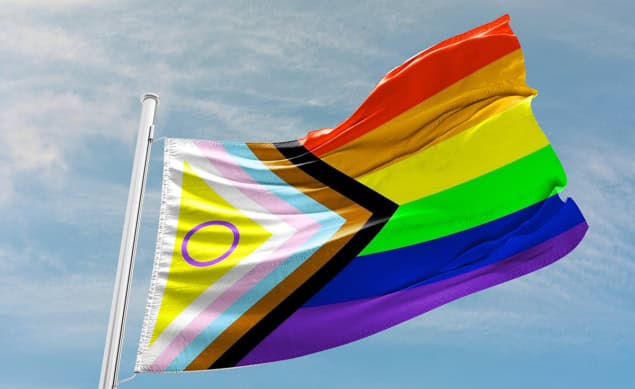Artemis Peck and Wendy Sadler explain that we need more initiatives to make sure queer people feel comfortable and welcome in science

Ask the average person in the street to describe a physicist and they will probably outline an eccentric older man with grey wiry hair wearing a lab coat or tweed jacket with elbow patches and a pair of glasses. While some members of the physics community do look like that – and there’s nothing wrong with it if they do – it’s certainly not representative of the whole. Indeed, since the 1960s researchers have been regularly testing children’s perceptions of scientists with the “draw-a-scientist test”. This has seen a decrease in “masculine-coded” results from 99.4% in the 1970s to 73% in 2018. That figure is still high, but the drop is a welcome development that is likely due to an increase in female scientists being featured in both traditional and social media.
Despite such progress, however, physics still comes across as a cisgender-heterosexual-dominated subject. Some may claim that science doesn’t care about identity and, yes, in an ideal world this would be true – you would leave identity at the lab door and just get on with doing physics. Yet this is a classic example of inequity. While treating everybody the same sounds great in practice, a one-size-fits-all approach doesn’t create a conducive atmosphere for work and study. So how do we encourage the queer community into science and make them feel more comfortable?
To find out, we surveyed 160 students and staff at UK universities who identify as queer about their experiences and inspirations. When asked to rate how comfortable queer people feel in different scenarios between one (“completely uncomfortable) and 10 (“completely comfortable”), respondents’ average score was 7.96 when it came to how they felt among their peers but just 5.66 in an academic setting. This difference was even starker with people who identify as transgender, who reported a score of 8.0 with peers and as low as 4.96 within academia.
We also did follow-up interviews with respondents who left contact information to get a more detailed picture. From these interviews, the idea of “belonging” came up a lot. Participants stated that if they don’t see people like them at a job interview, they will think twice about accepting a position in that organization. Almost half of transgender respondents say they will have difficulty getting into a science-related career compared with just 8.9% of queer cisgender respondents.
The lack of role models in science is a critical factor. Over three-quarters of respondents generally disagreed with the statement “there are enough queer role models in STEM”, with some saying it is “severely lacking” while also acknowledging how complicated it can be for queer people to put themselves “out there”.
While teachers are an important inspiration for both transgender and cisgender people, fictional role models play a greater role for transgender people. On a scale from one (being no influence) to seven (most influence), transgender people were slightly more inclined towards fictional role models than cisgender people (at 4.25 versus 3.52). This is an important avenue for transgender people through the “queer coding” of traditionally cisgender heterosexual characters. One of the survey responses explained how as a child they interpreted The Doctor from TV’s Doctor Who as a queer role model.
Targeted schemes
Queer people clearly do not feel well represented in science, neither within their institutions nor in the media. The solutions to both issues are intertwined. The media will not see an increase in queer scientists until we have more queer scientists, and we won’t have more queer scientists until queer people can see science as a safe and welcoming career option. Time magazine’s top 100 influential people for 2020, for example, contained 17 scientists, but the Guardian’s list of LGBTQ+ influencers for 2024 contained no scientists at all.
There are things we can do to make science more accepting on a personal level such as displaying pronouns as standard in all communication, and signposting to queer networks within or beyond our organizations. One interviewee suggested queer people wear something like a Pride pin badge to create more visibility within the science community so that newly recruited queer people feel like they belong. Protected: Challenging the space industry’s attitudes towards diversity, the ‘wild boar paradox’ explained
We also need targeted outreach to queer audiences in a similar way to how schemes have been created to increase women’s participation in science. Local Pride events or queer youth group meetings could be a good way to reach queer people without making them feel singled out and “othered”. The Institute of Physics, which publishes Physics World, regularly attends Pride events, for example, and this type of activity should be encouraged in other physics and science-based groups and industries to show they are actively seeking and welcoming connections and talent from the queer community.
As well as increasing access to real-life role models, fiction could be used to create accessible role models, especially for the transgender community. More scientific characters in films, books and TV series who identify as queer would help to give future queer scientists people they can relate to and help them feel they belong in science. By making these small but meaningful changes in institutions and supporting related cultural initiatives, we can show that science can indeed be for everybody and not just a select few.
- This article is based on the results of a final year BSc project by Artemis Peck.



